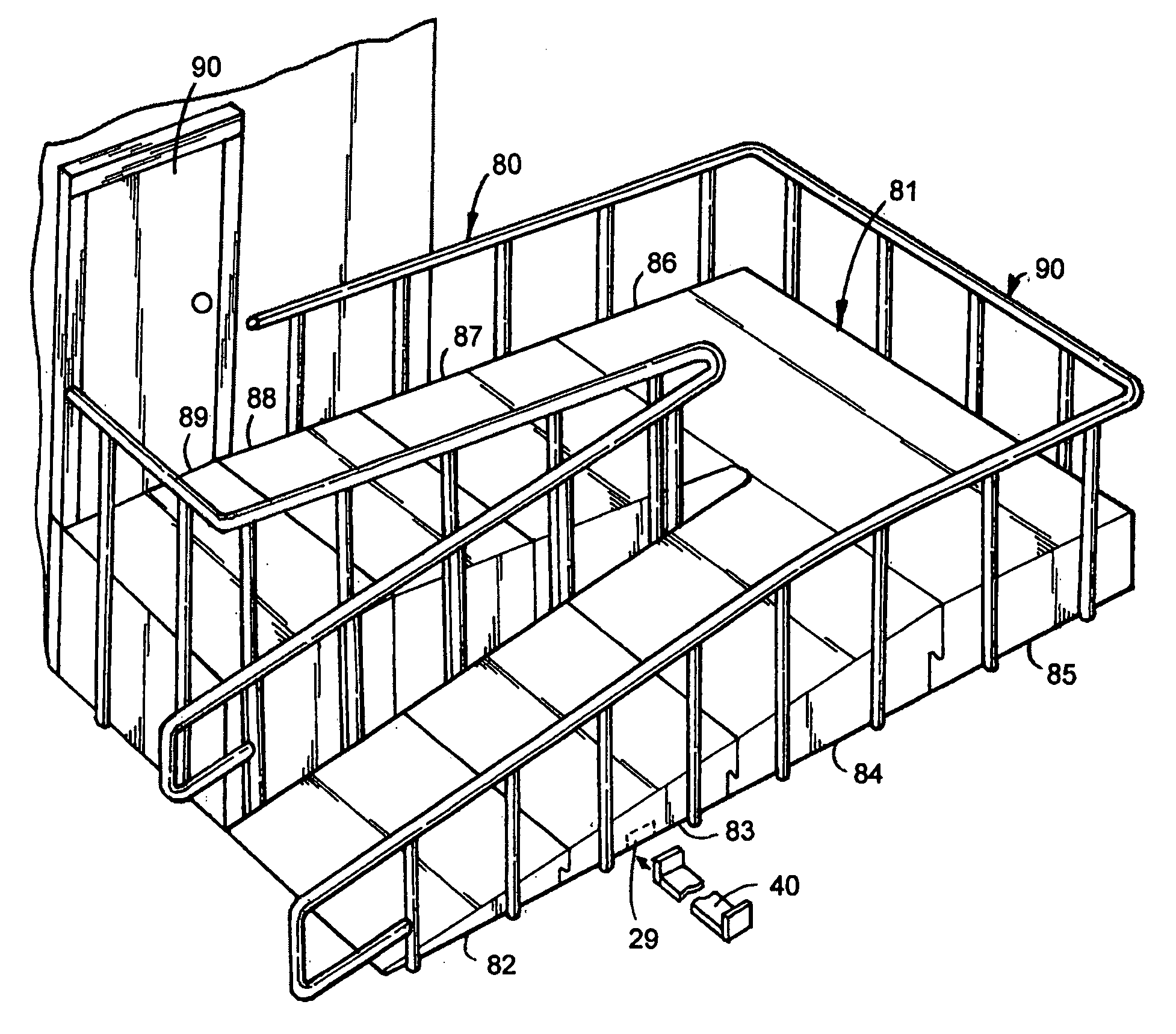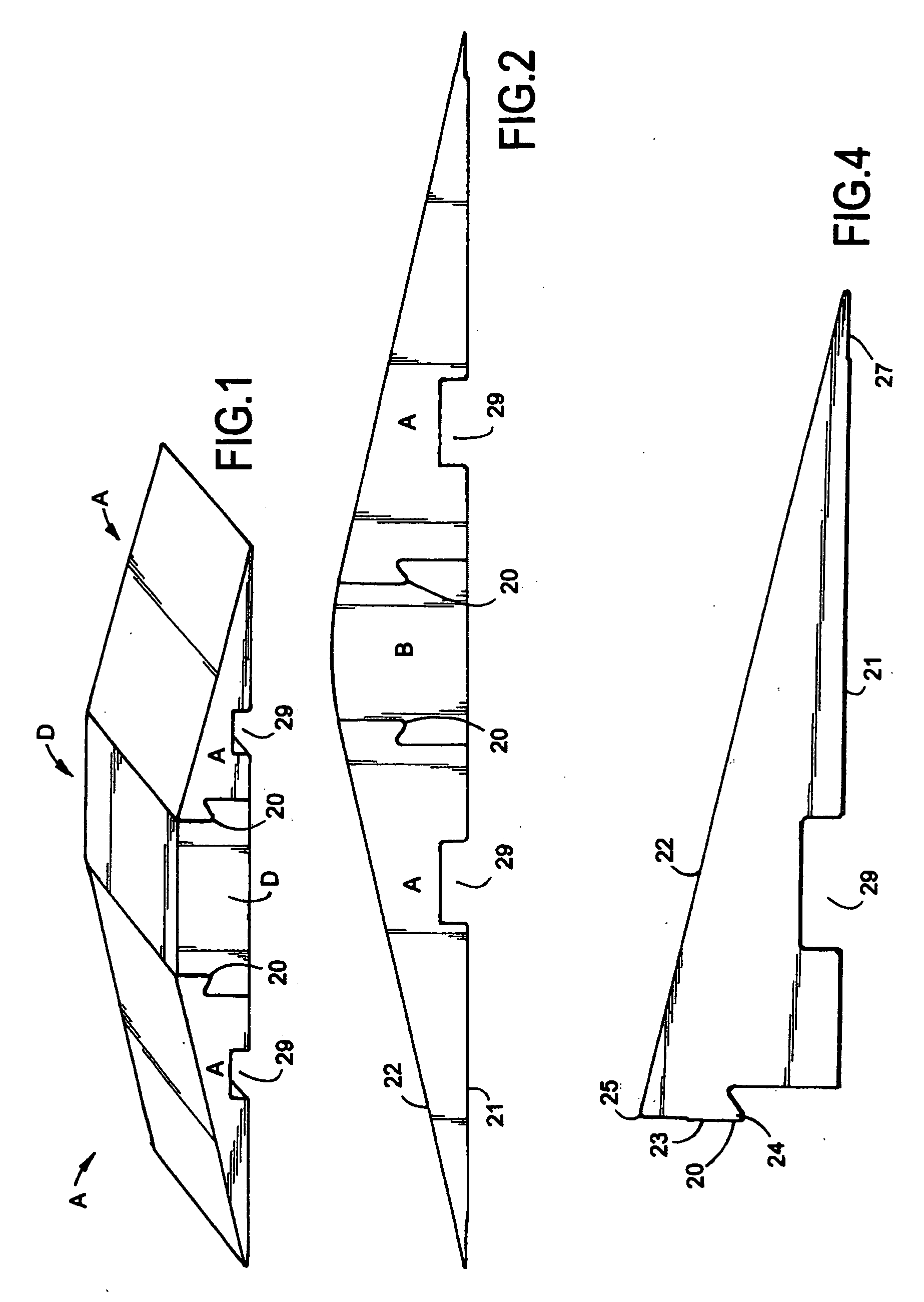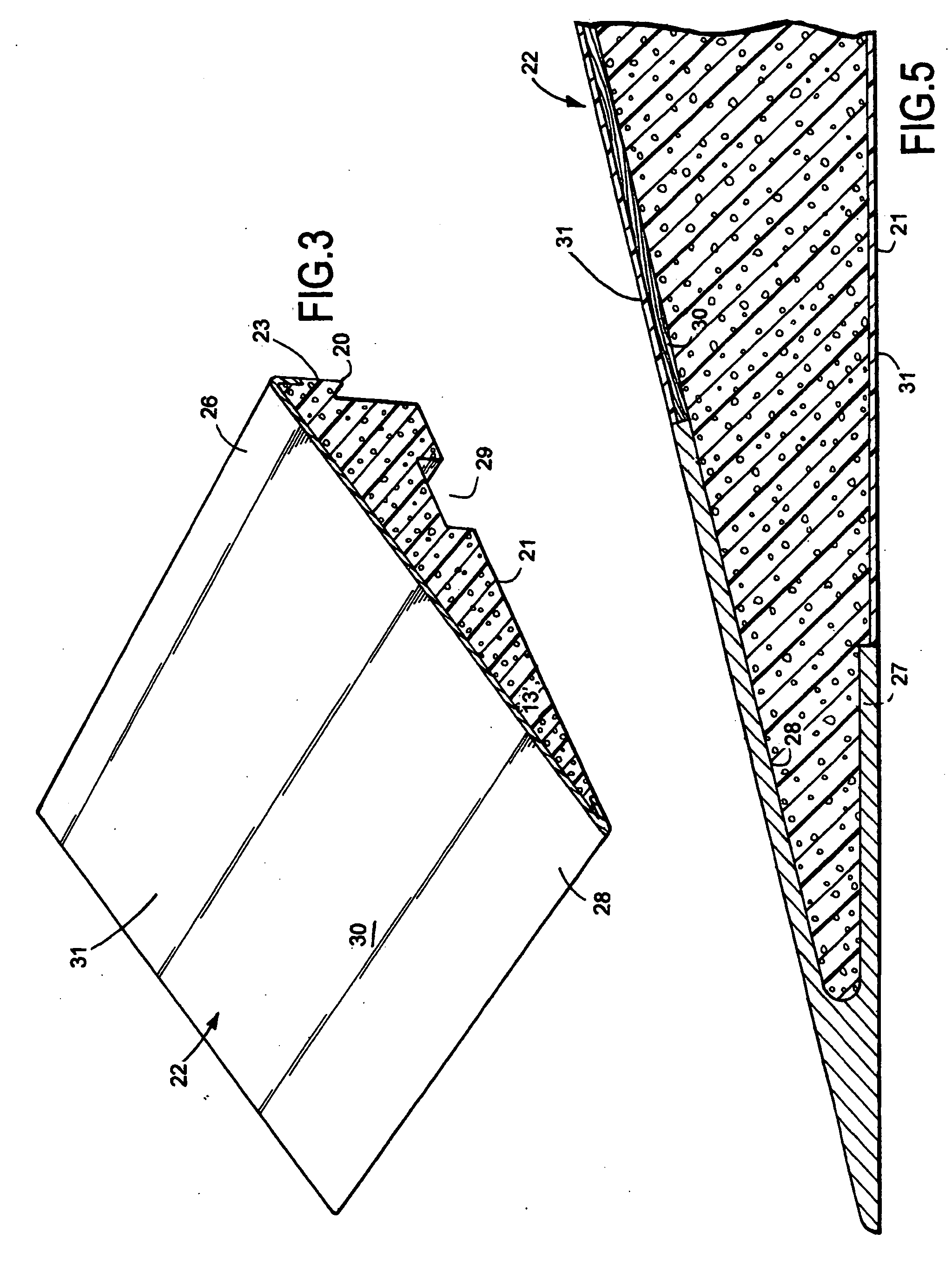Rearrangeable interconnectable system for handicap ramps and platforms
a technology of interconnection system and handicap ramp, which is applied in the direction of bridges, ground pavings, roads, etc., can solve the problems of inability to build handicap ramps, often never built, and often expensive ramps, etc., to achieve easy disconnecting and reconnecting, low weight of ramps and components, and no physical strain
- Summary
- Abstract
- Description
- Claims
- Application Information
AI Technical Summary
Benefits of technology
Problems solved by technology
Method used
Image
Examples
Embodiment Construction
[0049]The present system includes a variety of different components (also called “members”) interconnectable to create different terrains, such as for providing a handicap ramp, or a multi-level indoor (or outdoor) terrain or track for wheeled vehicles, such as multi-wheeled devices including in-line skates, skateboards, bicycles, tricycles, four-wheeled manually-powered cycles, and the like, or a stage / platform for performances. The base material for the illustrated ramps and platforms is lightweight foam, such as 3 pcf (pounds per cubic foot), or more preferably 2 pcf, which if functionally required, can be covered on load-bearing surfaces with hardboard (e.g., about 0.1 inch thickness) and then covered with a durable coating (e.g., polyurea). The results are low weight components that can be readily moved and put in place. Preferably individual blocks weigh about 60 pounds or less, or in some circumstances where children and young adults may want to move the blocks, about 25 poun...
PUM
 Login to View More
Login to View More Abstract
Description
Claims
Application Information
 Login to View More
Login to View More - R&D
- Intellectual Property
- Life Sciences
- Materials
- Tech Scout
- Unparalleled Data Quality
- Higher Quality Content
- 60% Fewer Hallucinations
Browse by: Latest US Patents, China's latest patents, Technical Efficacy Thesaurus, Application Domain, Technology Topic, Popular Technical Reports.
© 2025 PatSnap. All rights reserved.Legal|Privacy policy|Modern Slavery Act Transparency Statement|Sitemap|About US| Contact US: help@patsnap.com



